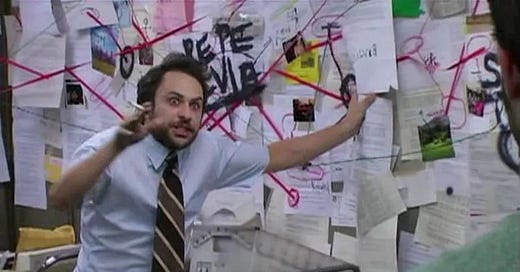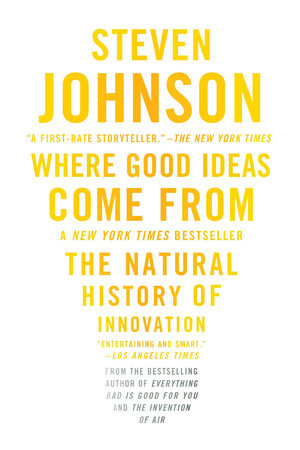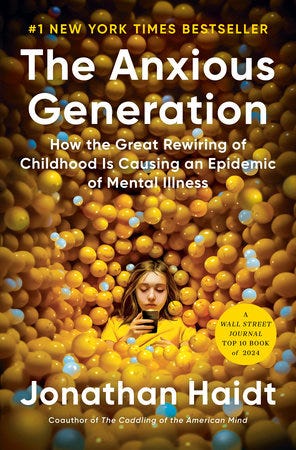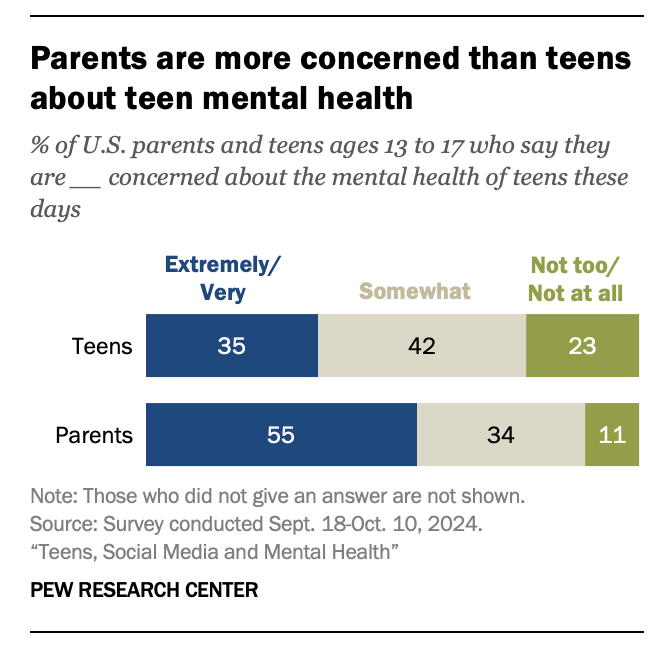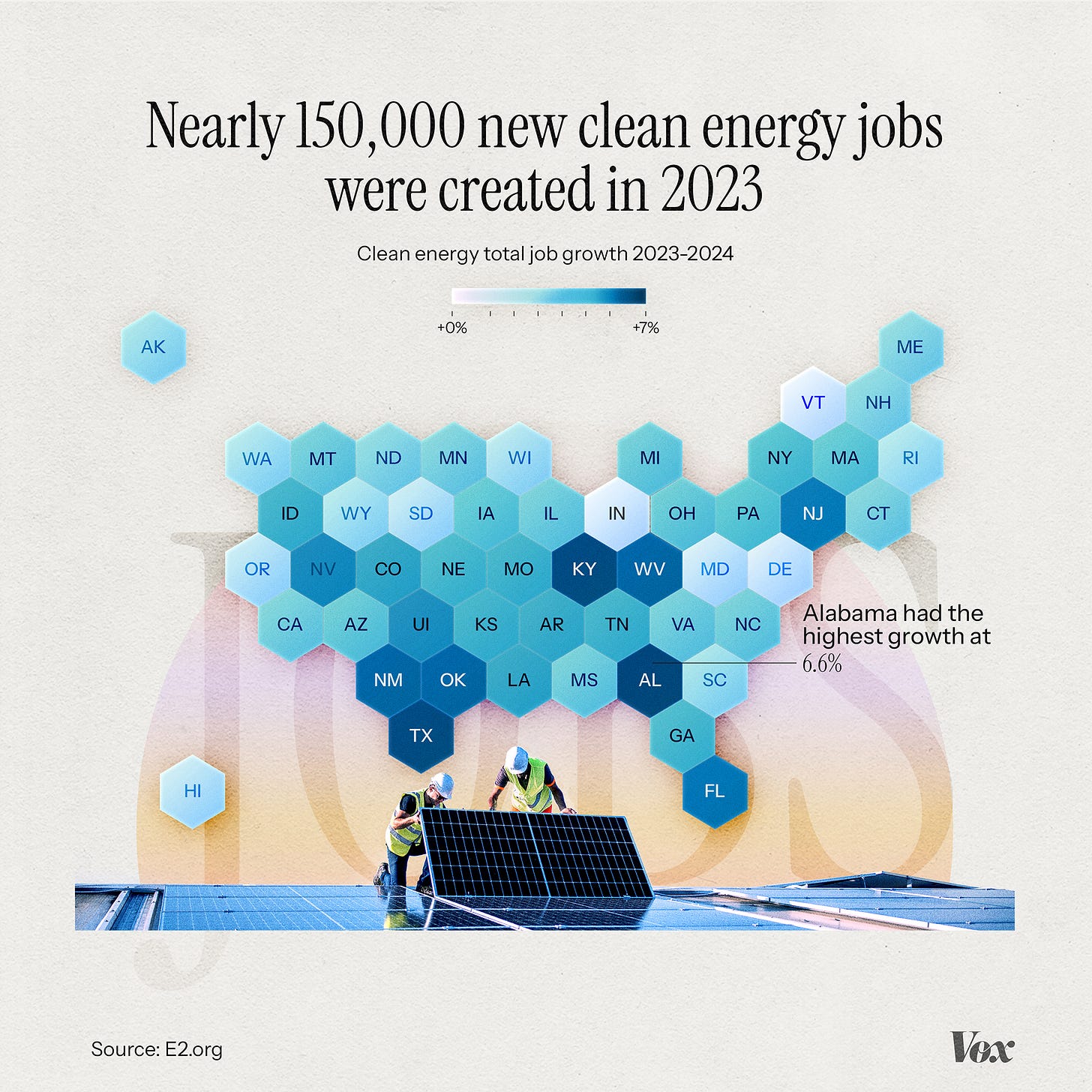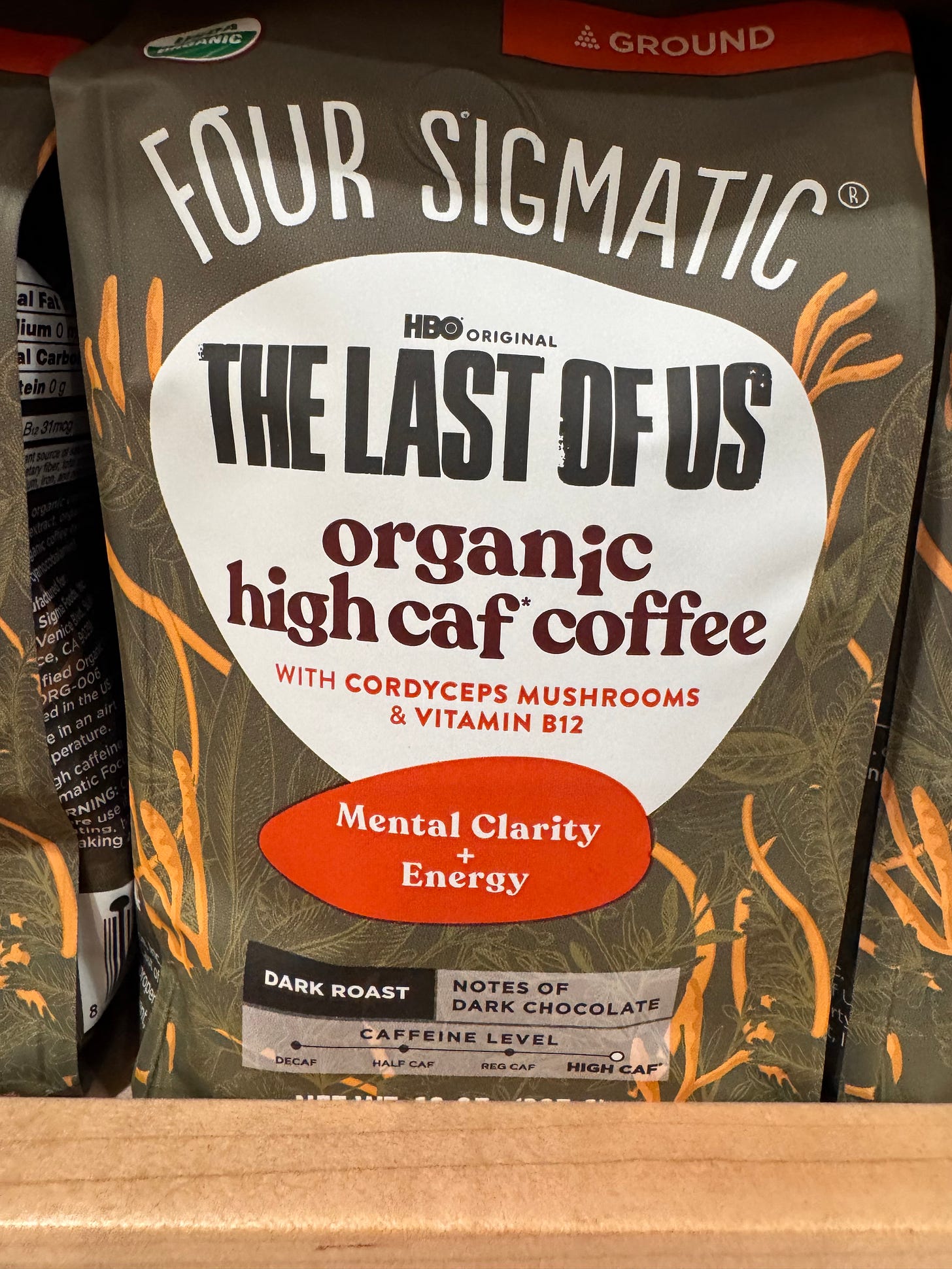What is the most resilient parasite? Bacteria? A virus? An intestinal worm? An idea. Resilient... highly contagious. Once an idea has taken hold of the brain it's almost impossible to eradicate. - Inception (movie)
This week:
If you care about ideas, you should care about how they spread
This year, I started doing Pilates.
Whatever picture you have of someone who practices Pilates…I do not fit that picture. Being the proverbial straight white male of a certain age.
Something that was remarked upon in curiosity from other class members, until other similar men started to show up too. We aren’t the majority, but we’re no longer the curiosity either.
Where did this idea come from? For me, it came through an article I read about NFL players using Pilates in their offseason training. But I’ve read plenty of offseason training programs that I haven’t adopted. Why Pilates? And why now?
How does an idea spread?
‘It’s okay for guys to do pilates?’ is just one example idea.
How does a truly big idea like ‘digital currency without centralized control’, aka cryptocurrency, spread?
Or the idea that journaling is good for your overall mental health?
How has the idea that ‘boys are failing’ spread? Influence our elections. Spur books and podcasts? And even infiltrate a movie that on its surface would seem to be all about girls?
In creative communications, we tend to think of ideas as traveling through content (or even being the content itself). The novelty of the content is propelling the idea forward faster. Backed up by the self-evident facts we present along with it.
But ideas really travel faster by adjoining to other adjacent ideas, which are familiar and meaningful to people.
The Adjacent Possible
The Adjacent Possible is a theory of biology that has been expanded into the realm of ideas and innovation. Most notably through the book Where Ideas Come From by Steven Johnson.
Steven argues that great ideas are built from parts of existing ideas and recombined in new and useful ways. Therefore, the most fertile ground for innovation isn’t looking inward or forward, but rather left and right, and using what’s adjacent to inform what’s possible for making tweaks to the existing.
It’s a great way to explain how the Iphone came to be as well as the myriad of innovations that come as a result of its introduction.
I believe the same holds true for how ideas are spread and become widely accepted.
The Adjacent Possible Makes the Novel Plausible.
If that can be true, then maybe so can this
Because in the same way that novel ideas become available to inventors as new inputs arise, that same context is required for people to more readily adopt those novel ideas. Particularly when the ideas are more abstract. Like mindfulness. Or climate change. Or crypto.
But, with enough complementary inputs, these ideas can shift in people’s minds from unlikely to plausible. From rejection to consideration to acceptance.
Adjacent Possible in action: National Women's Soccer League and WNBA. The WNBA ('97) and NWSL ('01) have existed for decades. Why now have they become popular? Because fandom has become intersected with ideas like women's empowerment, women's visibility, social justice, activism and equality along with individual star power... all creating the right conditions for fandom to explode.How does the Adjacent Possible-Plausible work?
1. Pattern Recognition
We start to see connections between disparate ideas.
As an example, the idea of journaling becomes connected to mindfulness and meditation. There’s a shared pattern recognition of slowing down the brain and removing distracting thoughts.
2. Mutual Reinforcement
Two (or more) adjacent ideas start to amplify each other’s visibility and spread as they lend credibility, context, and relevance to each other.
Journaling, meditation, and mindfulness become intertwined with digital detoxing, mental health, and wellness.
3. Lower Cognitive Barrier
Adjacent ideas are easier to accept because they fit comfortably within existing mental frameworks or narratives.
A novel idea (journaling will help my anxiety?) may face rejection; however, if it pairs up with a familiar concept (mindfulness training), then it amplifies and travels (journaling is a great way to improve my mental health).
4. Shared Understanding
This is where the virtuous cycle of idea spread begins, because it also taps into a deep human need to understand the world around us and ourselves. And to share those insights with others, do you see what I see too?
Want to watch the Adjacent Possible in action? Just watch any Joe Rogan Experince
Adjacent Plausible in action: 'Squid Game' without subtitles?
After the popular Netflix show release, Duolingo saw an uptick in people seeking to learn Korean on the site. Leading to a partnership idea for the second season releaseAdjacent Possible doesn’t just happen in a vacuum. To spread plausible ideas, you need a place for them to interact with other ideas.
You Need a Petri Dish
Case in point, the recent drive to ban cellphones in schools and social media for children. A lot of this is thanks to one book:
Published last March, the book by NYU social psychology professor Jonathan Haidt has struck a chord, to say the least.
1MM+ copies sold
55+ straight weeks on the NY Times best seller list
Helped end a stalemate in Australia behind legislation to ban social media for those under age 16
Driving a shift towards banning cellphones in schools across the US
The core idea, captured in the title’s name, is that childhood today has been ‘rewired’ in a way detrimental to kids’ mental health, yielding a more Anxious Generation.
It brings together a number of ideas, backed by studies and data, to sell a host of proposed solutions (more novel ideas).
A million copies sold/read is a lot, but not enough to change a law. It’s when the author went out to market the book that the conversation shifted. The ideas behind the book started to interact with other ideas, such as distrust in Big Tech and social platforms, a failing education system, and other broader cultural anxieties around boys failing, girls and self-esteem, political polarization, smartphone blame, generational differences, and parents’ own general anxieties.
Our kids are the least flourishing generation we know of - Ezra Klein Show
What enables this is a media system that helps propel this, through petri dish environments - news/talk shows, plus now podcasts.
Amplified by an ecosystem built on algorithms to cut these into bite-sized clips in order to further promote the show appearance while subsequently broadening the reach of the ideas.
To the point that the nascent ideas in the book now bubble up into the zeitgeist.
What Jonathan Haidt Thought When He Watched Adolescence
Any news or piece of content related to kids, mental health, and digital devices is now associated with the Anxious Generation.
Adjacent Possible in action: Bernie & Donald Trump. Anywhere from 12-15 percent of voters who support the liberal Sanders also voted for Trump. How could this be possible? Because of shared ideas- populism, distrust of institutions & elites, and that theirs is a movement and not just a candidate... that helped draw so many from one extreme to anotherWhat’s the ‘Big Idea?’
i.e., how could this apply
If you have a new novel idea to promote, what if you
1. PUT THE ‘BIG IDEA’ UP FIRST
In the process. We tend to define the guardrails and specifics first - audience, proof points, even message. And then work to define an idea. What if you defined the idea from the jump?
And used that as the jumping off point for all work?
Because then, instead of looking up/down the category, we look
2. LOOK LEFT AND RIGHT FOR ADJACENT IDEAS
What are the adjacent ideas out there that help amplify your idea? That will make it more receptive, less scary. Or help push past any other ideas that act as barriers?
Explore how these connect to your idea and then…
3. MAKE THE PATTERN CLEAR
By proximity- put yourself next to complementary ideas and those who stand for those ideas
By frequency- bang that drum consistently so it sticks
By creativity- demonstrate the connection, in the most disruptive, novel creative way possible
4. FIND YOUR PETRI DISHES
Put your idea in proximity to others, in environments where complementary ideas can be talked about and connected.
Take a media-agnostic approach. Ask what’s the best way to get to this idea talked about in conversation with other ideas to help it get received and spread?
Great example, organ donation gets mixed with ideas of immortality and passionate sports fandom
Some of the benefits I see with this approach are
It helps cut the timeline down. When you define the IDEA from the jump, you can start activating right away or laying the groundwork to activate later on.
It helps cut down rejection, because you aren’t trying to overwhelm with information and proof points. You’re pointing towards other ideas in common that support yours.
It casts a wider net, because you’re targeting ideas not just particular people.
It leads to other ideas. The example above with Duolingo and Squid Games is a great example. Once you think IDEA first and then left and right, you start to see new connections and new ideas everywhere.
A purple cow is only one thing. Remarkable. Remarkable means worth remarking about… So how much time are you spending making something worth talking as opposed to making spec?” - Seth Godin
Related:
From MIT: The Creativity Hack No One Told You About: Read the Obits
Creative ideas are more likely to emerge from combinations of concepts that are further apart in the mind’s conceptual network.
The greater the distance between two ideas, the more original and surprising their combination tends to be.
Why obits? Because reading their stories introduces you to a mix of fields — broadcasting, aerospace, esotericism, oral hygiene, database design, prenatal publishing — that you’d rarely, if ever, encounter all in one place. It’s exactly the kind of conceptually distant material that helps fuel creative thinking.
How “borrowed beats, loaned lyrics, and multipurpose melodies” are passed down through generations of music, from Edvard Grieg (1876) to Tupac). The Puddings interactive visualizaiton of the shared DNA of music
From Pew Research: Teens, Social Media and Mental Health
48% of teens say social media harm people, up from 32% in ‘22
48% also feel social media is bad for people their age, but only 14% feel so for themselves
"When it comes to fact-checking, Gen Z tends to have its own distinct method: Opening up the comment section."How Gen Z Became the Most Gullible Generation.
“They tend to feel comfortable relying on aggregate trust, so they’ll rely on Yelp reviews or Amazon reviews,” says Daniel Cox, a pollster who surveys young people. “This sounds like a very similar thing, right? They’re seeing what other people are saying about an article or a product and basing their decisions on that.”.
How gullible are you to fake news headlines? Here’s a test by Cambridge University to see
“I went to space and discovered an enormous lie” - astronaut Ron Garan (the lie, what he did not see but society holds up in highest regard is the economy)
Other Headlines:
China pits humanoid robots against humans in half-marathon for first time
But did it humble brag about it on Insta after?
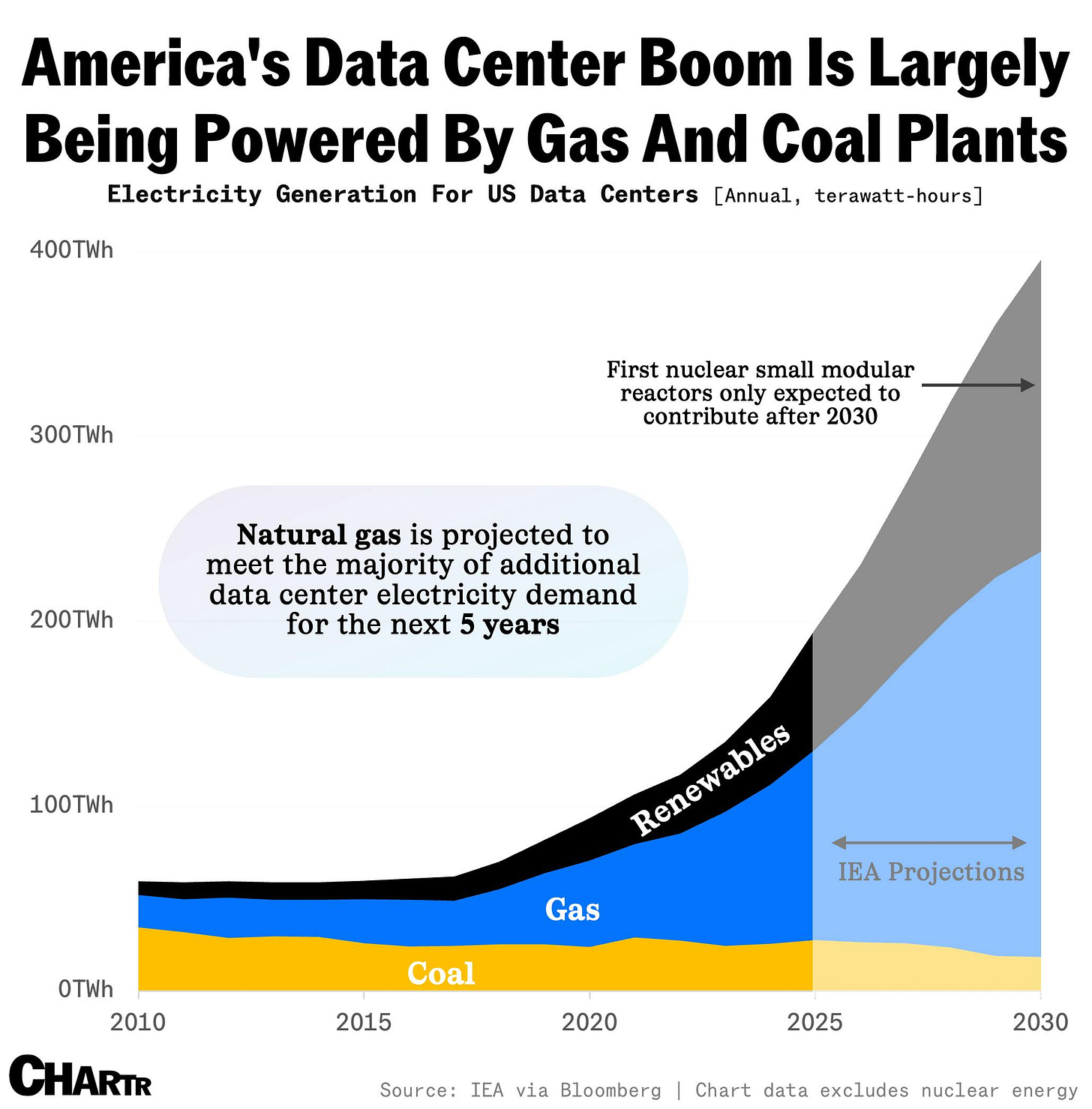

Out of eight companies reviewed — a combination of energy providers, owners of electricity generation assets, and technology manufacturers — use of the terms “emissions” and “climate” and/or “environment” fell from a cumulative high of 45 across the companies’ earnings calls in early 2020 to just three by the beginning of this year.To my main point this week… clean energy must be tied to economic opportunity first and foremost. And then show it working, for the Possible to become Plausible to those reluctant to believe.
Sometimes the best way to make an opinion argument isn’t in a traditional essay. Americans are inundated with news; it can sometimes take a satirical provocation to break through, even at the risk of causing offense.
NYTimes Larry David: My Dinner With Adolf, and also from the editor why the NYT published the satire
It always seems like philanthropy is about the redemption of the giver when it must be about the liberation of the receiver - Robert Egger, World Central KitchenA great conversation with Chef Jose Andres who has a new book Change The Recipe Because You Can't Build a Better World Without Breaking Some Eggs
“Every dollar spent on high-quality, birth-to-five programs for disadvantaged children can deliver a 13% per annum return on investment from better education and health outcomes for children, employment gains for parents, greater economic productivity and reduced spending on healthcare and crime.How expensive is childcare? New Mexico made childcare free. It lifted 120,000 people above the poverty line
NOTE: we don’t speak enough about how these are investments, not handouts, for our economy. There is a positive ROI.
Using technology to push back. Musician Benn Jordan explains how he used “adversarial noise” — a technique applied to audio files that sounds normal to humans, but like something else entirely to AI models — to poison music generators.
The good news is, unless you’re the president or a politician, at least 70% of Americans think it’s always or usually acceptable for you to cry in public.What about when it’s the president or politician who’s making me want to cry?
YouGov survey Most Americans have cried in their car — and more on the who, what, where, when, and why of U.S. tears and (related) Flowing DataWhy Americans Cry, Male and Female
And Just Because…
“The reason Superman works, the reason it’s interesting, is because it might not work. Kryptonite might show up. It’s not perfect. It’s real.” - Seth Godin
Market with Conviction?
Cluely is a AI desktop assistant which aims to help you ‘cheat on any conversation’ by offering you advice on what to say next.
Love this. Four Sigmatic leans into its core ingredient to build some notoriety with HBO’s The Last of Us. Made me stop in the store.
World Federation of Advertisers: Evaluating Better Ideas
Related from Better Briefs The issues with briefs and how to make them better
“The idea was simple: Create a structure around creative feedback that helped drive both consistency and risk-taking by getting everyone on the same page about what they are really feeling when they see new creative work. It did this by offering a kind of controlled vocabulary that could help them better articulate how they felt when they saw something.”The Creative Ladder in 2025: A Decade of Driving Creative Effectiveness
An alarming 33% have considered leaving the industry because of ‘the stress of working in new business or on pitches’. 42% of respondents said they would consider looking for a new job if their employer insisted on them working from the office more than the current requirement.New survey paints grim picture of pitch-obsessed, stressed UK ad agencies
The good news is that consumer time spent with media continues to rise. The bad news is that the share of time it spends with ad-supported media continues to decline,Time Spent With Media Reaches 'Saturation,' Declines First Time Since Great Recession
Not sure a sentence has made me want to vomit as much as this take on time spent with media
LG TVs’ integrated ads get more personal with tech that analyzes viewer emotions
A great product demo:
Resourceful
Andreeson Horowitz 4th Edition Report The Top 100Gen AIConsumer Apps including the rise of ‘vibe coders’ LLMs
The trick to having good ideas is not to sit around in glorious isolation and try to think big thoughts. The trick is to get more parts on the table. - Where Good Ideas Come From

